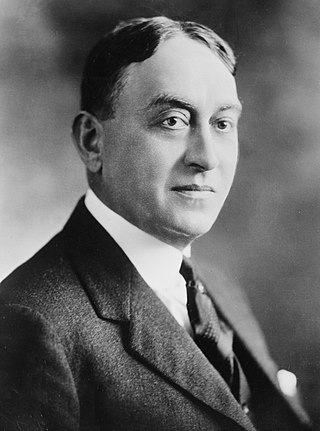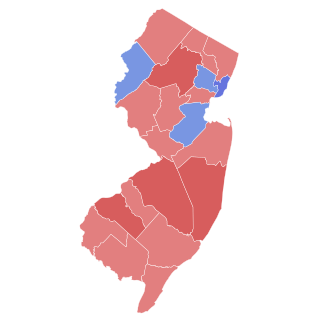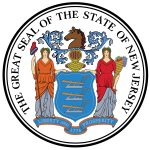
The 1924 Democratic National Convention, held at the Madison Square Garden in New York City from June 24 to July 9, 1924, was the longest continuously running convention in United States political history. It took a record 103 ballots to nominate a presidential candidate. It was the first major party national convention that saw the name of a woman, Lena Springs, placed in nomination for vice president. John W. Davis, a dark horse, eventually won the presidential nomination on the 103rd ballot, a compromise candidate following a protracted convention fight between distant front-runners William Gibbs McAdoo and Al Smith.

Edward Irving Edwards was an American attorney, banker, and Democratic Party politician who served as the 37th Governor of New Jersey from 1920 to 1923 and represented the state in the United States Senate from 1923 to 1929. He was a leading critic of Prohibition.

George Sebastian Silzer was an American attorney, jurist, and Democratic Party politician who served as the 38th Governor of New Jersey from 1923 to 1926.

Newton Albert Kendall Bugbee was an American businessman and Republican Party politician who served as New Jersey State Comptroller and Chairman of the New Jersey Republican State Committee. He was also the Republican candidate for Governor of New Jersey in 1919.

The 1922 United States Senate special election in Pennsylvania was held on November 7, 1922. Incumbent Republican Senator George Pepper, who had been appointed to the seat by Governor William Sproul following the death of Boies Penrose, was elected to fill the remaining four years on the term to which Penrose had been elected in 1920. Pepper comfortably defeated five other candidates, including Democratic nominee Fred Kerr of Clearfield County.

The 1989 New Jersey gubernatorial election was held on November 7, 1989. Incumbent Republican Governor Thomas Kean was term-limited after two consecutive terms. Democrat James Florio, a U.S. Representative from Camden County and a twice-unsuccessful candidate for Governor, defeated Republican U.S. Representative Jim Courter by the lopsided margin of 61.2%-37.2%.

The 1937 New Jersey gubernatorial election was held on November 2, 1937. Democratic nominee A. Harry Moore defeated Republican nominee Lester H. Clee with 50.84% of the vote.

The 1934 New Jersey gubernatorial election was held on November 6, 1934. Republican nominee Harold G. Hoffman narrowly defeated Democratic nominee William L. Dill with 49.90% of the vote.

The 1928 New Jersey Gubernatorial Election was held on November 6, 1928. Republican nominee Morgan Foster Larson defeated Democratic nominee William L. Dill with 54.88% of the vote.

The 1919 New Jersey gubernatorial election was held on November 4, 1919. Democratic nominee Edward I. Edwards defeated Republican nominee Newton A.K. Bugbee with 49.20% of the vote.

The 1910 New Jersey gubernatorial election was held on November 8, 1910. Democratic nominee and future President Woodrow Wilson defeated Republican Assemblyman Vivian M. Lewis with 53.93% of the vote. During the campaign, Wilson underwent a political transformation from a symbol of conservative Wall Street reaction into one of the leading members of his party's progressive faction. His victory was widely understood to be the prelude to his campaign for the presidency in 1912.

The 1901 New Jersey gubernatorial election was held on November 5, 1901. Republican nominee Franklin Murphy defeated Democratic nominee James M. Seymour with 50.88% of the vote.

The 1895 New Jersey gubernatorial election was held on November 5, 1895. Republican nominee John W. Griggs defeated Democratic nominee Alexander T. McGill with 52.28% of the vote.

The 1880 New Jersey gubernatorial election was held on November 2, 1880. Democratic nominee George C. Ludlow defeated Republican nominee Frederic A. Potts with 49.53% of the vote.

The 1859 New Jersey gubernatorial election was held on November 8, 1859. Opposition Party nominee Charles Smith Olden defeated Democratic nominee Edwin R. V. Wright with 50.76% of the vote.

The United States Senate election of 1922 in New Jersey was held on November 7, 1922.

The United States Senate election of 1928 in New Jersey was held on November 6, 1928. Incumbent Democratic Senator Edward I. Edwards ran for re-election to a second term in office, but was defeated by Hamilton Fish Kean in a landslide. This was the third of four straight elections to this seat in which the incumbents were defeated.
A Massachusetts general election was held on November 4, 1958, in the Commonwealth of Massachusetts.
A Massachusetts general election was held on November 4, 1952 in the Commonwealth of Massachusetts. Primary elections took place on September 16.

The 1934 Wisconsin gubernatorial election was held on November 6, 1934. Primary elections were held on September 18, 1934. Incumbent Democratic Governor Albert G. Schmedeman was defeated by Progressive nominee Philip La Follette.





















